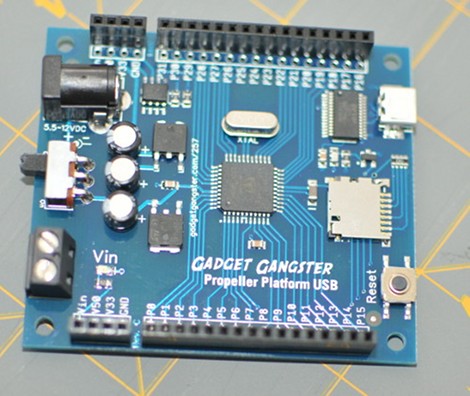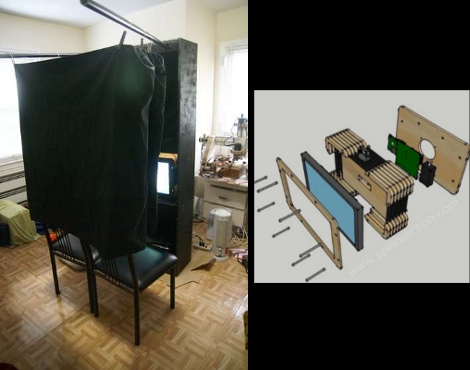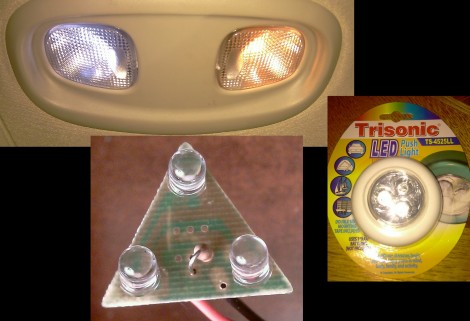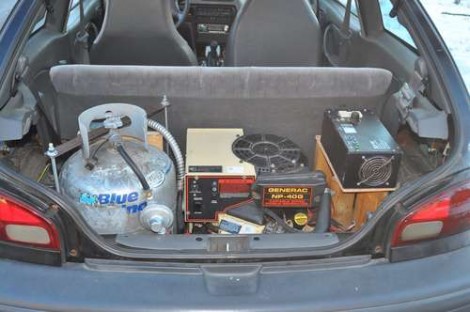[Ben Nelson] turned his electric Geo Metro into a plug-in hybrid. But wait, where’d he get an electric Geo Metro? It seems that we’re one hack behind [Ben], who converted the vehicle to all electric back in 2008 using a forklift motor and some batteries. This time around he’s following the Chevrolet Volt’s example by adding a backup generator. Instead of going with a gasoline power he added a tank of propane and the generator from a Recreational Vehicle. This won’t put out enough juice to drive while the generator is running, but you can use it to extend your traveling range by pulling over for a nap while it tops off the batteries.
Month: January 2011
Flaming Guitar Hero

[Chris Marion] knew he wanted to play with fire, or more accurately with fireball spewing valves, but he need a good project in which he could use them. Inspiration finally struck and he built this controller that matches fireballs to the fret buttons on a Guitar Hero controller. There’s quite a lot that goes into this but we think that he hit a home run. The basic components are a manifold with electronically actuated valves, another manifold for the pilot lights, and a modified Guitar Hero controller.
To interface the controller he used an Arduino along with [Bill Porter’s] PS2 library to read signals from the buttons. But the real labor intensive part of the build came with the manifold. There’s a hardware store’s worth of fittings and flexible copper pipe that go into that assembly. In the end this all came together in just one week.
[Thanks Bill]
Solar Monsters… You Know… For Kids!

Teaching kids to solder using kits is a fun time, but most of these beginner kits are a bit mundane. Not this one, it’s a solar-powered monster project. The components and their wiring connections are printed on a sheet of paper along with a background for that particular monster. The base of the paper is glued to a block of wood and at each solder junction there’s a copper nail. This way the kids can line up the components, check the picture to make sure the polarization is correct for each, then solder onto the large and stable nail head. As you can see in the video after the break, when the solar cell collects enough electricity the transistor triggers a motor to spin the monster.
But don’t get the idea that kits are only for kids. If you haven’t tried your hand with SMD soldering yet, this kit is for you.
Broken Laptop Recovered Using An Arduino

We see Arduino boards used in a lot of projects but we’ve never thought of using one as a USB crossover cable. That’s basically what [Jack the Vendicator] did to get his broken laptop running. When his video card stopped working he found himself unable to access the laptop. Newer machines don’t have a serial connector, which could have been used for a serial terminal, so he was at a bit of a loss since neither SSH nor VNC were installed. But he thought he might be able to use the Arduino as a serial terminal connector over USB. He plugged the Arduino into the laptop, and connected a USB serial converter from his desktop computer to the Arduino’s serial pins. In effect he’s just taking advantage of the FTDI chip, translating those signals back into USB on either end. Once he booted the headless laptop it took just a couple of blindly typed commands to get SSH running in order to regain control.
Getting Started With The Parallax Propeller

The folks at [gadget gangster] have been working on an excellent set of tutorials for getting started with the Propeller chip itself, the open-source Propeller Platform Modules and the Spin programming language that’s used to control things. All of the basics and a growing selection of more advanced topics are covered in gorgeous detail, with most of the tutorials containing helpful photographs and screen shots, source code listings and video walk-throughs to help you understand what the authors are talking about.
Parallax is not new to the microcontroller game. Almost two decades ago, their BASIC Stamp embedded microcontroller was the springboard for many tinkerers. The Parallax Propeller is an easy-to-use microcontroller that’s been gaining popularity for a while now. Several Propeller support modules have hit the market recently, providing power supply and interface functions to the Propeller similar to how the popular Arduino platform interfaces with AVR microcontrollers.
Foldaway Photo Booth

For his wedding [Dave] wanted to have a photo booth but the $1k rental price was really getting him down. Instead, he decided to build his own. This cost less money and he gets to keep the booth once the festivities have concluded. He started by designing the assembly in Sketchup, taking into consideration the portability requirements that allow this to fit through doorways. What he came up with is a unit made from one sheet of plywood that folds up via piano hinges and takes about eight minutes to set up (video after the break). But where the design really shines is the all-in-one electronics module seen modeled on the right. It houses the monitor and the computer in one compact and rugged package.
If you like this you should also check out the suitcase photo booth and one other wedding-prompted build.
Dome Light LED Retrofit

One of the bulbs in the dome light of [Pete’s] car burnt out. These were a bit hard to get at for replacement so he thought he’d try something that would last longer, and have no problem standing up to the vibrations that go along with automotive electronics. But plug-in LED replacements cost more money than he was willing to spend. Luckily there was a dollar store next door to the auto part shop, so he bought three LED touch lights for the dome and cargo bulbs.
After cracking them open he found that the LEDs were wired in parallel. He needed to put these in series in order to take advantage of the voltage drop. After de-soldering the bulbs he measured the characteristics of one, then calculated the voltage drop and resistor value using a worst case scenario of 14V to avoid damage to the light when the engine is revving high. From there he cut the traces on the board and rewired them. The reworked module fits nicely and as you can see in the image, gives a more pleasing light color than the orange of the stock bulb.











